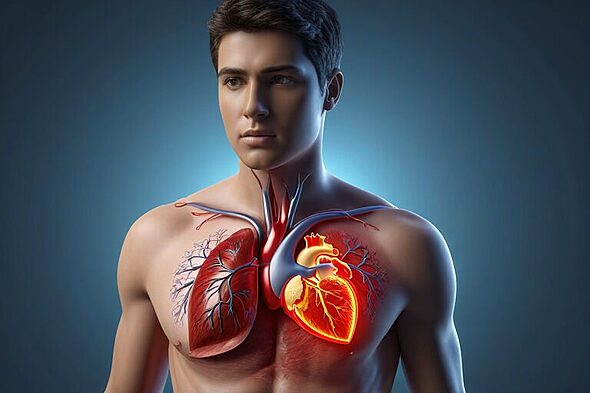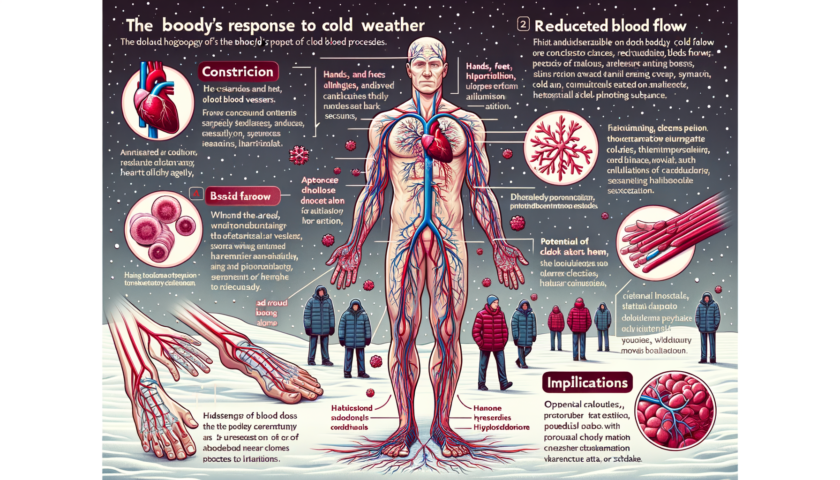Did you know that nearly 45% of heart attacks are classified as “silent” according to the American Heart Association? These silent heart attacks often go unnoticed by individuals, leading to delayed medical intervention and increased risk of complications. Recognizing the silent symptoms of a heart attack is crucial for early detection and prevention.
Key Takeaways:
- Nearly 45% of heart attacks are considered “silent” and go unnoticed by individuals.
- Recognizing the silent symptoms of a heart attack is essential for early detection and medical intervention.
- Prevention through lifestyle modifications and proactive healthcare measures is crucial to protect against silent heart attacks.
- Regular check-ups, managing risk factors, and adopting a heart-healthy lifestyle are vital for preventing heart attacks.
- Increasing awareness about silent heart attack symptoms can save lives and reduce the risk of complications.
Understanding Silent Myocardial Infarctions
In this section, we will explore the concept of silent myocardial infarctions (SMIs) and shed light on their unique characteristics compared to traditional heart attacks. SMIs are heart attacks that occur without the typical symptoms, making them challenging to diagnose and often go unnoticed by individuals. To better understand SMIs, it is essential to define what they are, discuss their prevalence and impact on men versus women, delve into diagnostic measures for early detection, and explore various treatment strategies and lifestyle modifications to manage and prevent SMIs.
Defining Silent Heart Attacks
A silent heart attack, also known as a silent myocardial infarction, is a heart attack that occurs without the typical symptoms such as chest pain or discomfort. Instead of experiencing the intense pain commonly associated with heart attacks, individuals may only experience mild symptoms or none at all. These silent heart attacks can be just as dangerous as traditional heart attacks and can lead to severe complications if left untreated.
The Prevalence and Impact on Men vs. Women
While both men and women can experience SMIs, research suggests that men may be more susceptible to silent heart attacks. Studies have found that men are more likely to have SMIs than women, although the reasons for this gender disparity are still being investigated. It is crucial to understand these gender differences to improve diagnostic accuracy and tailor treatment options accordingly.
Diagnostic Measures for Early Detection
Early detection of SMIs is vital to prevent further damage to the heart and reduce the risk of complications. Diagnostic measures for early detection may include electrocardiograms (ECGs), blood tests to measure cardiac biomarkers, and imaging tests such as echocardiograms or cardiac MRI scans. It is essential for healthcare professionals to remain vigilant and consider the possibility of an SMI in patients, particularly those with risk factors or atypical symptoms.
Treatment Strategies and Lifestyle Modifications

The treatment approach for SMIs is similar to that of traditional heart attacks and may include medications to manage symptoms, prevent blood clots, and reduce the risk of future cardiovascular events. In addition to medical intervention, lifestyle modifications play a crucial role in managing and preventing SMIs. These modifications may include adopting a heart-healthy diet, engaging in regular physical activity, quitting smoking, managing stress levels, and controlling conditions such as high blood pressure, high cholesterol, and diabetes.
Symptoms That Go Unnoticed: From Fatigue to Subtle Discomfort
This section explores the symptoms of a silent heart attack that often go unnoticed or are mistaken for other conditions. Recognizing these symptoms is crucial in order to seek prompt medical attention and prevent further complications.
A silent heart attack may not present the typical chest pain commonly associated with a heart attack. Instead, it manifests through subtle discomforts that can easily be overlooked. One of these symptoms is fatigue, which can be attributed to various factors, such as stress or lack of sleep. Individuals may dismiss it as a normal part of their busy lives and fail to recognize it as a potential indicator of a heart problem.
Other subtle discomforts that can occur during a silent heart attack include:
- Shortness of breath
- Nausea or stomach pain
- Indigestion or heartburn
- Lightheadedness or dizziness
- Jaw, arm, neck, or back pain
- Cold sweats
It is important to note that these symptoms can vary from person to person, and their severity may differ as well. Some individuals may experience multiple symptoms, while others may only experience one or two.
Recognizing these silent heart attack symptoms is crucial, as early intervention can help prevent further damage to the heart muscle and improve the chances of a successful recovery. If you or someone you know experiences any of these symptoms, it is essential to seek immediate medical attention.
The Atypical Presentation of Heart Attacks in Women
Heart attacks, also known as myocardial infarctions, can present differently in women compared to men. It is important to recognize these gender differences in heart attack symptoms to ensure timely medical intervention and prevent further complications. While chest pain is a common symptom for both men and women, women often experience unique signs that may not be immediately recognized as heart-related.
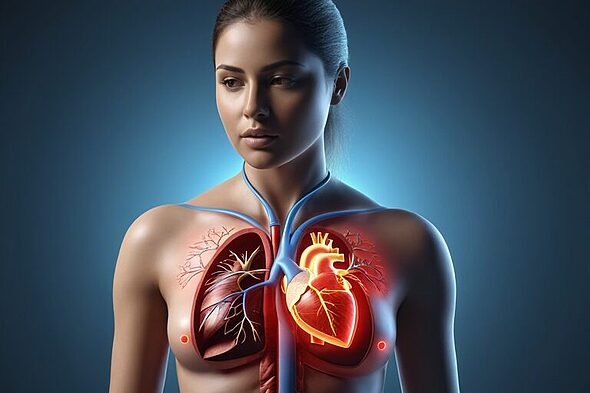
How Symptoms Differ Between Genders
Women may present with atypical heart attack symptoms that differ from the classic signs experienced by men. While men often experience intense chest pain, women may have more subtle symptoms such as:
- Fatigue: Unexplained and persistent exhaustion
- Shortness of breath: Difficulty breathing or feeling breathless, particularly during physical activities or at rest
- Back pain: Discomfort or pain in the upper back, shoulders, or jaw
- Nausea or vomiting: Feeling sick to the stomach or vomiting without a clear cause
- Indigestion or heartburn: Discomfort in the upper abdomen, similar to acid reflux symptoms
The Variety of Signs Unique to Women
Women may also experience unique heart attack signs that are not commonly associated with the condition. These include:
“It is essential for women to be aware of these atypical symptoms and trust their instincts. If something doesn’t feel right, it’s important to seek medical attention promptly,” says Dr. Sarah Patel, cardiologist at the Heart Health Center.
Other unique signs that women may experience during a heart attack include:
- Unexplained anxiety or panic attacks: Feeling a sense of doom or intense apprehension without a clear trigger
- Extreme fatigue: Overwhelming tiredness that persists even after getting an adequate amount of sleep
- Dizziness or lightheadedness: Feeling faint or dizzy, often accompanied by a rapid or irregular heartbeat
- Flu-like symptoms: Unexplained flu-like symptoms, such as fever, chills, and body aches
Importance of Timely Medical Intervention
Early medical intervention is crucial for women experiencing a heart attack to minimize damage and improve outcomes. Delaying medical treatment can result in more extensive heart damage and increase the risk of complications, including heart failure.
If you or someone you know is experiencing any of the aforementioned symptoms, especially if they are persistent or unexplained, it is essential to seek medical attention immediately. Prompt medical intervention can save lives and improve long-term prognosis. Remember, every minute matters in a heart attack.
Recognizing the Lesser-Known Signs of Heart Attack
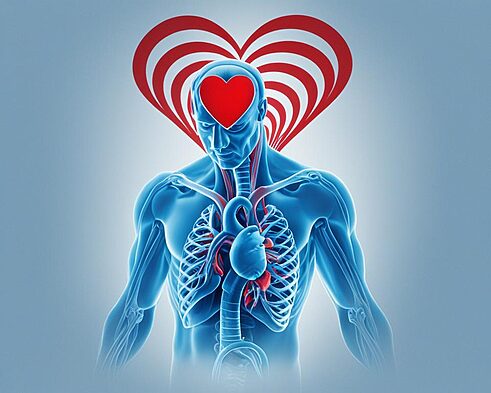
Unconventional Symptoms: Nausea to Dizziness
While chest pain is often considered the hallmark symptom of a heart attack, it’s important to recognize that not all heart attacks present with this typical sign. In fact, there are several lesser-known symptoms that individuals may experience during a heart attack, and these can vary among different people. One such symptom is nausea, which can be accompanied by vomiting or general feelings of gastrointestinal discomfort. Dizziness or lightheadedness can also be an indication of a heart attack. These unconventional symptoms may be easily mistaken for indigestion or simply feeling unwell, leading to delayed medical intervention.
Pain That Radiates: More Than Just Chest Pain
Contrary to popular belief, the pain experienced during a heart attack can also radiate to other parts of the body, extending beyond the chest area. This radiating pain can manifest in the neck, jaw, arms (particularly the left arm), shoulders, back, or even the upper abdomen. It’s important to be aware of this atypical symptom as it can often be confused with muscle strain or other non-cardiac issues. If you experience any discomfort or pain in these areas, especially in conjunction with other heart attack symptoms, it’s crucial to seek immediate medical attention.
Addressing Symptoms Beyond the Chest Area
In addition to nausea, dizziness, and radiating pain, there are other symptoms beyond the chest area that may be indicative of a heart attack. These include shortness of breath, excessive sweating, unexplained fatigue, and a sense of impending doom. It’s important to note that while these symptoms may occur independently, they can also manifest in combination with each other or with chest pain. Being aware of these lesser-known signs can help individuals recognize a heart attack and seek prompt medical attention, potentially saving their lives.
Addressing the Connection Between Cardiac and Cognitive Health
In recent years, research has shown a significant connection between heart health and cognitive function. It has become evident that maintaining a healthy heart is not only crucial for physical well-being but also for preserving cognitive abilities and preventing cognitive decline. Understanding this connection is essential for individuals of all ages, as it highlights the importance of prioritizing heart health for long-term brain health.
Studies have indicated that poor heart health can contribute to an increased risk of cognitive decline. Conditions such as high blood pressure, diabetes, and high cholesterol, which are known to affect heart health, can also negatively impact cognitive function. This link emphasizes the need to address heart health concerns as early as possible to reduce the risk of cognitive decline.
On the other hand, adopting heart-healthy habits can promote better cognitive function and preserve brain health. Regular exercise, a balanced diet, and maintaining a healthy weight are all key elements of a heart-healthy lifestyle that can benefit cognitive function. Additionally, managing stress, getting enough sleep, and engaging in mental exercises such as puzzles and reading can also contribute to better cognitive health.
“Preserving heart health is crucial for maintaining cognitive abilities and preventing cognitive decline.”
One possible explanation for the connection between heart health and cognitive function lies in the intricate network of blood vessels that supply oxygen to the brain. When the heart is healthy, it is better equipped to provide an adequate blood supply to the brain, ensuring optimal brain function. Conversely, impaired heart function and reduced blood flow can deprive the brain of oxygen and nutrients, leading to cognitive impairments.
To further illustrate the connection between heart health and cognitive function, consider the impact of a sedentary lifestyle on both aspects. Leading a sedentary life can contribute to the development of heart disease and increase the risk of cognitive decline. Conversely, regular physical activity can improve heart health and promote better cognitive function. This demonstrates the interplay between the two and emphasizes the need for individuals to prioritize both cardiac and cognitive health.
| Heart Health Tips for Promoting Cognitive Function | Cognitive Health Tips for Supporting Heart Health |
|---|---|
|
|
By adopting and implementing these heart-healthy habits and cognitive function-promoting strategies, individuals can effectively support both their cardiac and cognitive health. It is important to remember that small changes can make a significant impact over time, and prioritizing these aspects of well-being can contribute to a healthier and more fulfilling life.
Heart Attack Risk Factors You Can’t Afford to Ignore
In order to reduce the risk of a heart attack, it is crucial to understand the key factors that contribute to this life-threatening condition. By identifying and addressing these risk factors, individuals can take proactive measures to protect their heart health. This section will discuss the following heart attack risk factors:

Age, Smoking, and Genetic Influences
Age plays a significant role in heart attack risk, as the likelihood of experiencing a heart attack increases with age. Additionally, smoking is a major risk factor for heart attacks, as it damages blood vessels and decreases overall heart health. Genetic influences can also contribute to an increased risk of heart attacks, as certain inherited traits or conditions may make individuals more susceptible to cardiovascular diseases.
High Cholesterol, Hypertension, and Diabetes
High cholesterol levels can lead to the buildup of plaque in the arteries, increasing the risk of a heart attack. Hypertension, or high blood pressure, puts added strain on the heart and can damage blood vessels. Similarly, individuals with diabetes are at an elevated risk of heart attacks, as high blood sugar levels can cause long-term damage to blood vessels.
Obesity, Stress, and Dietary Habits

Obesity is a significant risk factor for heart attacks, as excess body weight puts additional stress on the heart. Chronic stress can also contribute to heart attack risk, as it can lead to unhealthy coping mechanisms such as overeating, smoking, or excessive alcohol consumption. Unhealthy dietary habits, such as consuming a diet high in saturated fats, sodium, and processed foods, can also increase the risk of heart attacks.
To visualize the relationships between these heart attack risk factors, refer to the table below:
| Heart Attack Risk Factors | Impact on Heart Attack Risk |
|---|---|
| Age | Increases the risk |
| Smoking | Significantly increases the risk |
| Genetic Influences | May increase the risk |
| High Cholesterol | Increases the risk |
| Hypertension | Increases the risk |
| Diabetes | Increases the risk |
| Obesity | Increases the risk |
| Stress | May increase the risk |
| Dietary Habits | May increase the risk |
It is important to remember that these risk factors are not mutually exclusive and often interact with each other, further elevating the risk of heart attacks. By addressing and managing these risk factors through lifestyle modifications, regular check-ups, and proactive healthcare, individuals can significantly reduce their chances of experiencing a heart attack.
Heart Attack Prevention: Steps to Protect Yourself
Preventing heart attacks requires a proactive approach towards maintaining heart health. By adopting a heart-healthy lifestyle, following a balanced diet, engaging in regular exercise, managing stress, and prioritizing regular check-ups and screenings, individuals can significantly reduce their risk of experiencing a heart attack.
A heart-healthy lifestyle involves making conscious choices that promote cardiovascular well-being. This includes avoiding smoking and minimizing exposure to secondhand smoke. Smoking is a major risk factor for heart disease, and quitting smoking can have immediate and long-term benefits for heart health.
Adopting a heart-healthy diet is crucial for preventing heart attacks. This involves consuming nutrient-rich foods, such as fruits, vegetables, whole grains, lean proteins, and healthy fats. Limiting the intake of saturated fats, trans fats, cholesterol, sodium, and added sugars is also essential.
Regular exercise plays a vital role in maintaining a healthy heart and preventing heart attacks. Engaging in moderate-intensity aerobic exercises, such as brisk walking, swimming, or cycling, for at least 150 minutes per week can improve cardiovascular fitness. Strength training exercises should also be incorporated twice a week for overall heart health.
Stress management is important for heart health as chronic stress can contribute to the development of heart disease. It is crucial to identify stressors and implement effective stress-management techniques such as meditation, deep breathing exercises, yoga, or engaging in hobbies that promote relaxation and mental well-being.

In addition to leading a heart-healthy lifestyle, regular check-ups and screenings are vital for early detection and prevention of heart attacks. Routine visits to healthcare professionals can help identify and address any cardiovascular risk factors or underlying conditions that may increase the likelihood of a heart attack.
“Preventing a heart attack requires a holistic approach that encompasses lifestyle modifications, consistent adherence to a heart-healthy diet, regular exercise, stress management, and proactive healthcare measures.”
By prioritizing heart attack prevention methods, individuals can take control of their heart health and reduce their risk of experiencing a heart attack. Adopting these steps and making them a part of one’s daily routine can have a significant positive impact on overall cardiovascular well-being.
Emerging Health Concerns: COVID-19 and Cardiac Complications
As the world continues to grapple with the COVID-19 pandemic, emerging evidence suggests that the virus can have long-term effects on cardiovascular health. Post-COVID, individuals may experience a range of cardiovascular complications, highlighting the need for increased awareness and proactive measures.
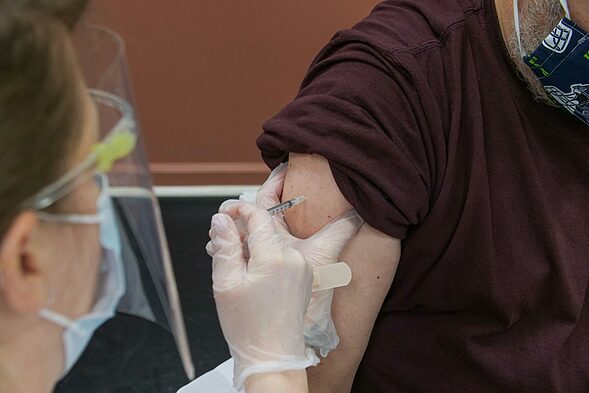
Long-Term Cardiovascular Effects Post-COVID
Research indicates that COVID-19 survivors may face persistent cardiovascular issues even after recovering from the initial infection. These long-term effects can include myocardial inflammation, myocarditis, arrhythmias, and an increased risk of heart failure. It is crucial for healthcare providers and individuals to monitor and manage these potential complications to ensure optimal cardiac health.
Link Between Severe Infections and Heart Health
Severe infections, including COVID-19, can have a significant impact on heart health. The inflammatory response triggered by the virus can lead to endothelial dysfunction, blood clot formation, and plaque destabilization, increasing the risk of heart attacks and other cardiovascular events. Individuals with pre-existing cardiovascular conditions are particularly vulnerable and should take extra precautions to protect their heart health.
Furthermore, COVID-19 can directly affect heart muscle cells, causing damage and impairing cardiac function. This highlights the importance of close monitoring and ongoing care for individuals recovering from severe infections to prevent long-term cardiovascular complications.
As we navigate through the challenges posed by the COVID-19 pandemic, it is critical to prioritize cardiac health and take proactive measures to mitigate the long-term cardiovascular effects of COVID-19. By staying informed, following recommended guidelines for infection prevention, and seeking appropriate medical care, individuals can protect their heart health and reduce the risk of serious complications.
The Influence of Environmental Factors on Cardiac Health
Environmental factors play a significant role in determining our overall health, including the well-being of our hearts. Exposure to certain environmental conditions can have a direct impact on heart health, increasing the risk of heart disease and heart attacks.
Air pollution, for example, is a major environmental factor that has been linked to heart disease. Breathing in polluted air can introduce harmful particles and toxins into our respiratory system, which can then travel to the heart and cause inflammation and damage to the cardiovascular system.
Noise pollution is another environmental factor that can negatively affect heart health. Studies have shown that prolonged exposure to high levels of noise, such as traffic noise or loud machinery, can lead to increased blood pressure, stress, and an increased risk of heart disease.
Extreme temperatures, both hot and cold, can also have an impact on heart health. Cold temperatures can constrict blood vessels and increase the workload on the heart, leading to an increased risk of heart attacks. On the other hand, extreme heat can cause dehydration and put added stress on the cardiovascular system, also increasing the risk of heart-related complications.
To protect our heart health, it is essential to be aware of these environmental factors and take measures to minimize our exposure to them. This can include avoiding heavily polluted areas, using air filtration systems in our homes, and wearing appropriate clothing to protect against temperature extremes. Additionally, advocating for clean air and taking collective action to reduce pollution levels can have a significant impact on public heart health.
In conclusion, environmental factors play a crucial role in the development and progression of heart disease. By understanding these influences and taking proactive steps to mitigate their impact, we can protect our heart health and promote overall well-being.
The Realities of Heart Attack Emergencies
In a heart attack emergency, time is of the essence. Knowing when to seek emergency care and how to provide first aid measures can make all the difference in saving a life. Time sensitivity is critical in cardiac events, and immediate medical attention is crucial for the best possible outcome.
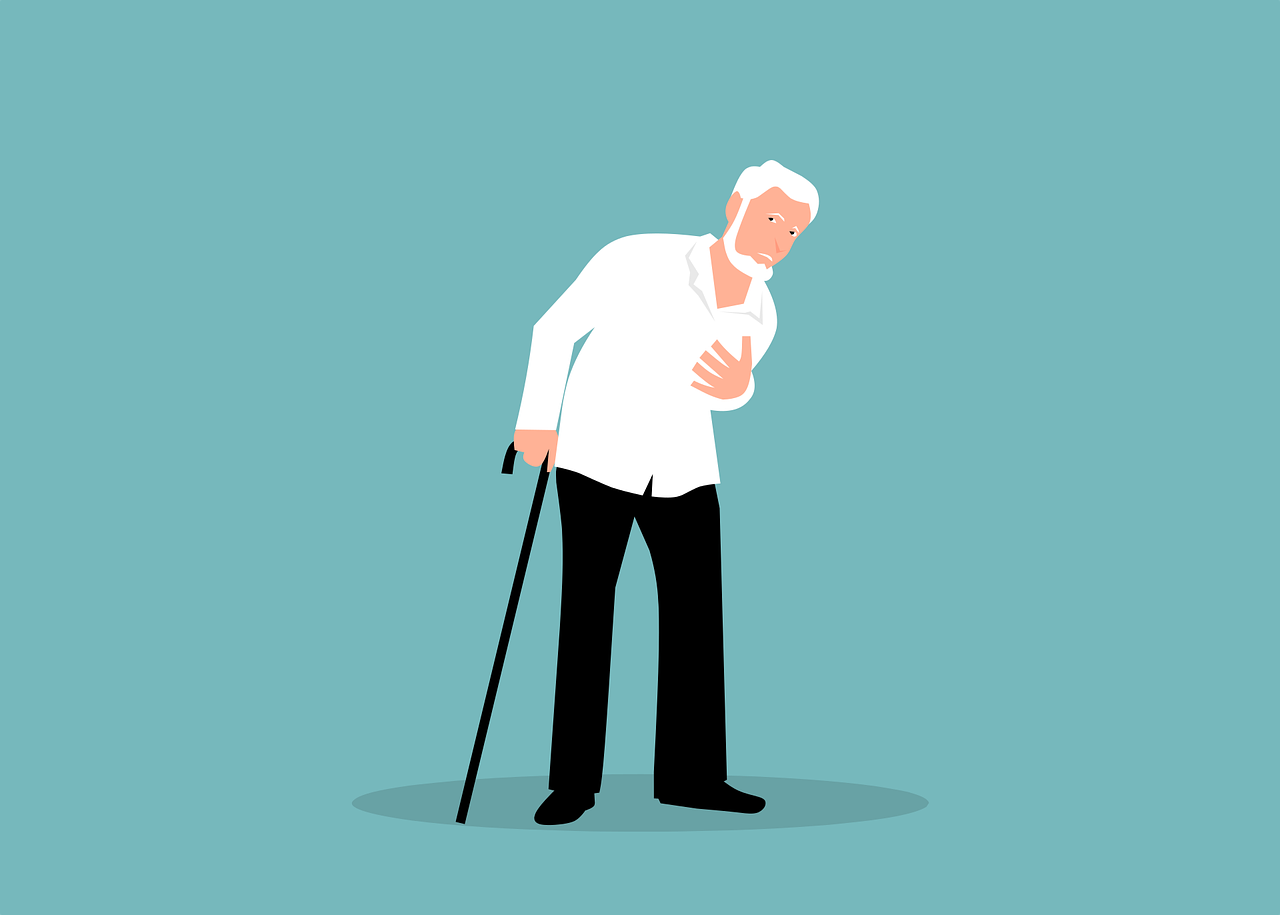
When to Seek Emergency Care
If you or someone around you experiences symptoms of a heart attack, it is important not to delay seeking emergency care. Some common signs of a heart attack include:
- Chest pain or discomfort
- Shortness of breath
- Pain or discomfort in the arms, back, neck, jaw, or stomach
- Nausea, vomiting, or lightheadedness
- Cold sweats
If any of these symptoms are present, it is essential to call emergency services immediately. Do not try to drive yourself or the person experiencing the symptoms to the hospital. Emergency medical professionals are equipped to handle heart attack emergencies and can provide the necessary care while en route to the hospital.
First Aid Measures for Immediate Response
While waiting for medical professionals to arrive, there are some first aid measures that can be taken:
- Have the person sit down and rest in a comfortable position.
- If the person is not allergic, give them one aspirin (325 mg) to chew slowly.
- Stay with the person and monitor their symptoms.
- If the person becomes unconscious and stops breathing, perform CPR until medical help arrives.
Please note that these first aid measures should only be performed if you are trained in cardiopulmonary resuscitation (CPR).

Understanding the Critical Nature of Time in Cardiac Events
The critical nature of time in heart attack emergencies cannot be emphasized enough. Every minute counts when it comes to restoring blood flow to the heart muscle. Delaying medical intervention can lead to irreversible damage and increase the risk of complications. Remember, the faster medical help is received, the better the chances of survival and recovery.
The Young Demographic: Rising Cardiac Arrests Explained
This section sheds light on the rising incidence of cardiac arrests among young adults and explores the cultural and lifestyle shifts that may contribute to this concerning trend. It discusses the impact of cultural factors and highlights new risk factors that are emerging among young adults, providing insights into mitigation strategies for cardiac health.
Cultural and Lifestyle Shifts Affecting Young Adults
Young adults today are experiencing significant cultural and lifestyle shifts that can have a profound impact on their cardiac health. The fast-paced nature of modern life, increased stress levels, and sedentary behaviors can all contribute to an increased risk of heart attacks. Additionally, the prevalence of unhealthy diets, lack of exercise, and excessive use of electronic devices further compound the problem.
Changing cultural norms, such as an increased reliance on processed foods and a decrease in physical activity, are also contributing factors to the rising incidence of cardiac arrests in young adults. These shifts can lead to the development of risk factors like obesity, high blood pressure, and high cholesterol, which are all known contributors to heart attacks.
Understanding and Mitigating New Risk Factors
As cultural and lifestyle shifts continue to evolve, it is important to understand and address the new risk factors that are emerging among young adults. For example, the increased use of social media and online platforms has been associated with higher levels of stress and anxiety, which can impact cardiac health. Additionally, the consumption of high-calorie and processed foods has become more prevalent, leading to an increase in obesity rates.
Addressing these new risk factors requires a multi-faceted approach. Public health campaigns and education efforts can play a crucial role in raising awareness about the importance of a healthy lifestyle and the potential consequences of unhealthy behaviors. Encouraging regular physical activity, promoting nutritious diets, and providing tools for stress management are essential steps in mitigating the new risk factors associated with rising cardiac arrests in young adults.
The image above visually represents the alarming rise in cardiac arrests among young adults and underscores the need for awareness and action.
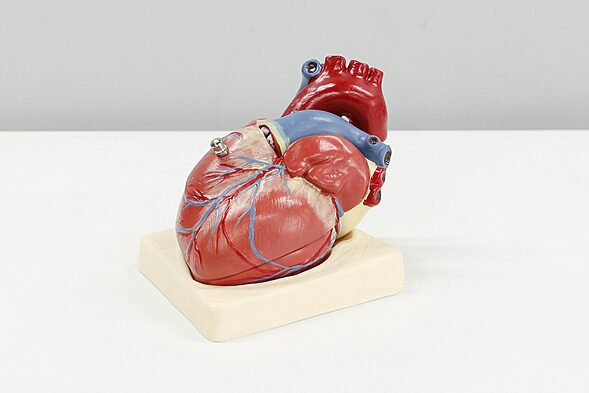
Conclusion
In conclusion, understanding the silent symptoms of a heart attack is crucial for early detection and timely medical intervention. By recognizing the signs that often go unnoticed, individuals can take proactive steps to protect their heart health. Prevention plays a key role in reducing the risk of heart attacks, and adopting heart-healthy habits is paramount.
It is important to prioritize regular check-ups and screenings to identify any underlying risk factors and manage them effectively. Lifestyle modifications such as maintaining a balanced diet, engaging in regular exercise, managing stress, and avoiding smoking are essential for heart attack prevention.
By being aware of the symptoms associated with heart attacks and seeking immediate medical care when necessary, individuals can significantly improve their chances of a positive outcome. Remember, prompt intervention is critical in cardiac emergencies, as time is of the essence.
Take control of your heart health today. By implementing the tips and strategies discussed in this article, you can protect yourself from the silent symptoms of heart attack and promote a healthier heart. Stay informed, be proactive, and prioritize your well-being for a heart-healthy future.







